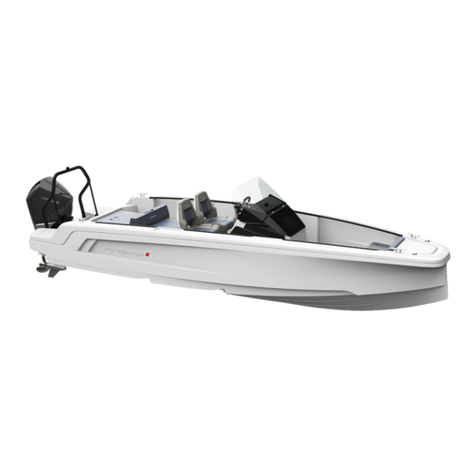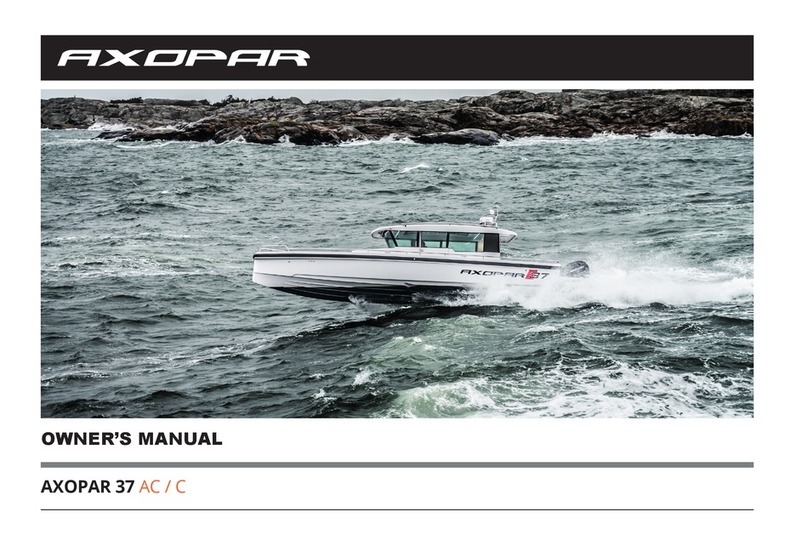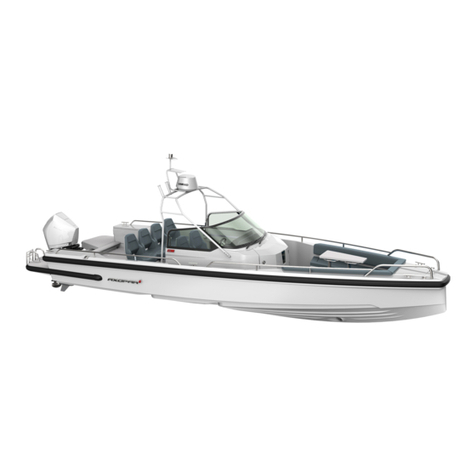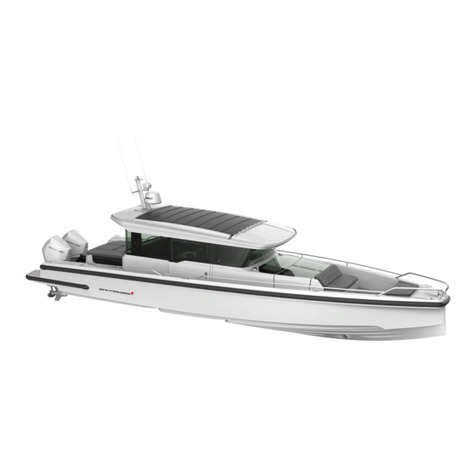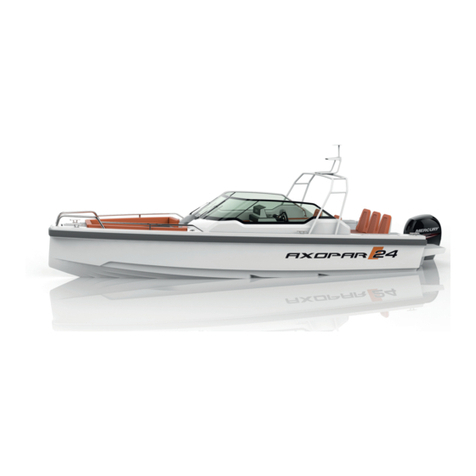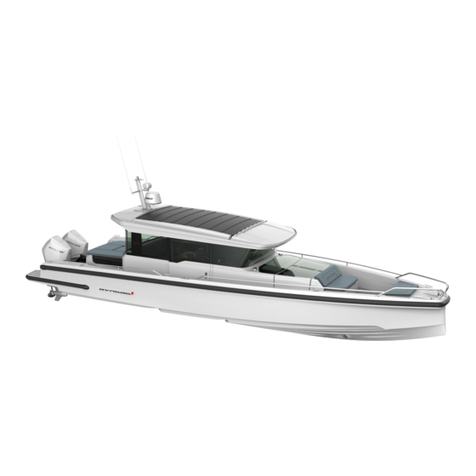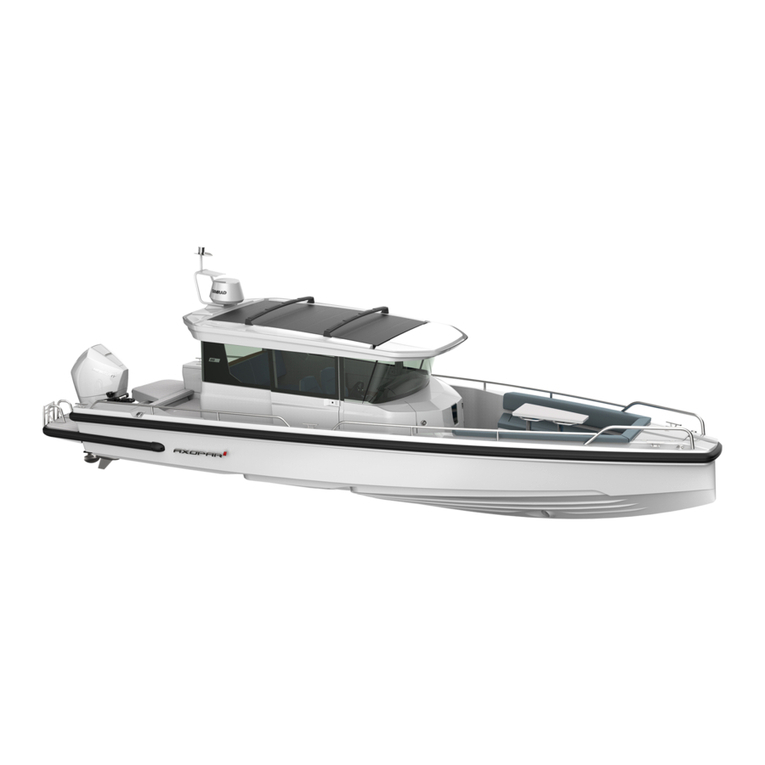23
In this user’s manual you will nd important information that will help
you handle and maintain your boat in a safe and easy manner. Further-
more, the manual contains detailed information about the boat and
the systems installed, and general information about handling and tak-
ing care of your boat.
We advise you to read the manual carefully and familiarise yourself with
your boat before you start to use it. Naturally this owner’s manual is not
a substitute for boating safety skills or good seamanship. If this is your
rst boat or if this boat type is new to you, we ask for your own com-
fort and safety that you ensure you can handle the boat before you set
out for the rst time. Your boat dealer, local boat clubs and national
motorboat or yacht federations will gladly inform you about local sea
schools or recommend approved instructors.
You should ensure that the anticipated wind and wave conditions cor-
respond to the design category of your boat, and that you and your
crew are able to handle the craft in these conditions. Design category
C corresponds to wind and wave conditions that can vary from storm
to strong winds. Category C also indicates a risk of exceptional swell
and gust. Even if your boat is designed for such conditions, they are still
very dangerous. Only a capable, t and trained crew, using a well main-
tained craft, can satisfactorily operate in such conditions.
This owner’s manual is not a detailed maintenance or troubleshooting
guide. If problems occur, you should contact the boat manufacturer or
their representative. When you are in need of maintenance or repair
and alteration work, you should always turn to competent and trained
workshops. Changes that can affect the boat’s security features must
be assessed, carried out and documented by competent professionals.
The boat manufacturer cannot be held responsible for unauthorised
modications. Every change to the boat’s centre of gravity (from highly
mounted heavy equipment or a new engine type etc.) will signicantly
affect the stability, trim and performance of the boat.
The boat owner must take local and international regulations into con-
sideration concerning the boat crew, equipment and handling of the
boat. In some countries, a driving licence or a separate authorization is
required for driving the boat and in some countries special regulations
might also be in force.
Congratulations on your new Axopar boat! We thank you for
choosing this boat and wish you safe and enjoyable moments out
on the waters.
FOREWORD
Always maintain your craft properly and make allowance for the deteri-
oration that will occur over time and as a result of heavy use or misuse
of the craft. Any craft, no matter how strong it may be, can be severely
damaged if not used properly. Inappropriate use of this boat i.e. use
which is not compatible with safe boating, is not allowed. It is always
important to adjust the speed and direction of the craft to the sea con-
ditions and your own boating experience.
If your boat is tted with a life raft, carefully read its operating manual.
On-board, the craft should have the appropriate safety equipment
according to the type of craft, weather conditions, etc. This equipment
is compulsory in some countries. The crew should be familiar with the
use of all safety equipment and the most important actions in different
emergency situations (man overboard recovery, towing, etc.). Sailing
schools and clubs regularly organize rescue drills.
The equipment in your boat may differ from the equipment used in the
pictures and illustrations in this manual. The reason for this might be
e.g. due to any optional equipment you have chosen or modications
that have been adapted since this manual was made. In such cases we
recommend that you contact your local dealer for additional informa-
tion regarding the equipment in question.
Keep this manual in a safe place and pass it on to the new owner if
you sell your boat. If the manual is mislaid or destroyed, a copy can be
ordered from your dealer. The warranty on the engine, as well as option-
al equipment such as trim tabs, bow thrusters, navigation equipment
and other equipment tted afterwards, is on the individual supplier’s
conditions. The warranties for this equipment and the suppliers’ contact
information are enclosed. Concerning all other warranty claims, please
contact you Axopar dealer mentioned on the cover page.
See the purchase agreement/order for the scope of your purchase. In
case something does not work satisfactorily with your boat or its equip-
ment, you can check the service documents for possible service and
repair measures. In the event of uncertainty, you should always con-
tact your dealer.
Please note that your boat is a recreational craft, thus not suitable for
professional use.
Specications, illustrations and examples and related constructional data
in this publication are not binding. We reserve the rights for changes.






